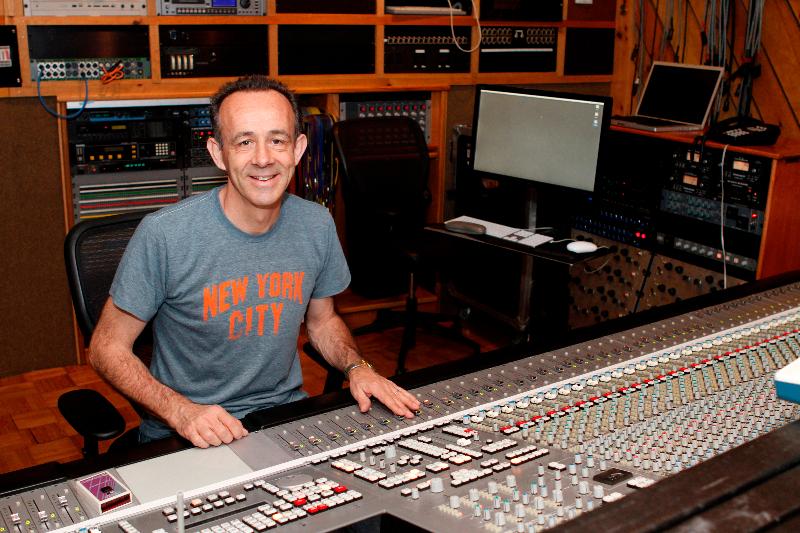Kevin Killen: Crafting Expansive Mixes with Sonnox Plug-ins
Kevin Killen has earned a reputation as one of the industry’s top engineers, having worked with icons like U2, David Bowie, and Peter Gabriel.
His career began as an assistant engineer in Dublin, where he quickly made a name for himself, eventually moving to New York City without knowing anyone but determined to succeed. Now based at Avatar Studios in Manhattan, one of the world’s premier multi-room facilities, Killen continues to push the boundaries of his craft. Whether working with emerging artists or established legends, one thing remains constant: his reliance on Sonnox Plug-ins.

Discovering Sonnox Plug-ins at Real World Studios
Killen first encountered Sonnox Plug-ins in 2003 while remixing Peter Gabriel’s So album in 5.1 Surround Sound at Real World Studios in Bath, England. “I had originally worked on that record as an engineer in 1985, and Peter asked me to faithfully reproduce the original mixes in surround before getting into any ‘trickery,’” Killen explains. Using the Sony Oxford RF-3 Console for the first time, he was impressed by its musicality, which he could replicate with the Sonnox EQ and Dynamics plug-ins.
As he transitioned from analog consoles and tape machines to a hybrid model, Killen found that many digital mixes sounded harsh and unmusical. But while mixing Iarla Ó Lionáird’s Invisible Fields for Real World Records, he discovered the Sonnox EQ and Dynamics plug-ins. “The music was a hybrid of traditional and modern elements, and the Sonnox plug-ins were instrumental in achieving a sound that Peter Gabriel called the best from his entire label up to that point.”
Transitioning to In-the-Box Mixing
By 2004, most of Killen’s mixing work was shifting to in-the-box, although he was initially dissatisfied with the results. “To me, it sounded edgy and harsh,” he says. However, the introduction of Sonnox plug-ins transformed his perception. “They allowed me to achieve a level of sound quality in the box that was comparable to my analog mixes. Within a year, one of my mastering engineers even preferred my in-the-box mixes over my previous analog work. From that point on, Sonnox EQ and Dynamics became my go-to plug-ins.”
Bringing Depth and Dimension to Mixes
Killen aims to make his mixes expansive and three-dimensional. “I want the listener to be transported by the music, to feel like they’re immersed in it. I strive to give it extra width, height, and depth—from the lowest to the highest frequencies, from the front of the speaker to the furthest point you can imagine,” he explains.
I want the listener to be transported by the music, to feel like they're immersed in it.
This approach varies depending on the artist’s vision, whether they want their music layered and deep or upfront and dry. Sonnox Plug-ins help Killen create these multi-dimensional soundscapes quickly and intuitively, allowing him to focus on the nuances that make each mix unique.
Sonnox EQ and Dynamics: Core Tools for Precision and Musicality
Killen’s favorite Sonnox Plug-ins are the EQ and Dynamics. “The EQ’s four variable curves are incredibly versatile, allowing me to go from an SSL style EQ to a NEVE, GML, or a broader mastering-style EQ—all within one plug-in,” he says. For compression, the Oxford Dynamics is Killen’s preferred choice because of its smooth control and flexibility. “I’m not a fan of heavy compression, and the Oxford Dynamics offers musical compression with sidechain options and a warmth control that mimics analog gear.”
A Streamlined Mixing Template with Sonnox Plug-ins
Killen’s streamlined approach involves using fewer plug-ins while maintaining high-quality sound. “I’ve created a template using Sonnox Plug-ins for all my EQ and compression needs. My drums are always bussed down to one stereo group, often with the GML EQ into the Inflator, which provides all the flexibility I need,” he says. “Each individual channel has minimal processing, freeing up CPU and allowing for a more elegant mix.”
Killen’s basic template includes a drum sub-group, a music sub-group, and a vocal sub-group, which are combined into one final group. “Between those four subgroups, I use a maximum of eight plug-ins. If everything is well-recorded, I can achieve a great mix with just those eight. This approach keeps the mix clean and efficient.”
When Sonnox Plug-ins Save the Day
Whether working on projects from the start or taking over mixes from other engineers, Killen consistently relies on Sonnox EQ, Inflator, and Dynamics plug-ins. “The EQ’s five options allow me to find the right curve for any instrument quickly,” he says. “When your ear is in tune with a particular plug-in, you know you can get results fast. There are many choices in the marketplace, but Sonnox plug-ins are like my favorite guitar—they’re reliable, musical, and I know exactly how to get the best sound out of them.”
Looking Ahead: A Tried and True Approach
For Killen, the comfort and reliability of Sonnox Plug-ins are crucial. “I’m always exploring new software, but I keep coming back to Sonnox because they deliver the sound I want without the fuss,” he concludes. As Killen continues to work with top-tier artists and push the boundaries of his mixes, Sonnox Plug-ins remain at the heart of his creative process, providing the tools he needs to craft music that resonates on every level.
